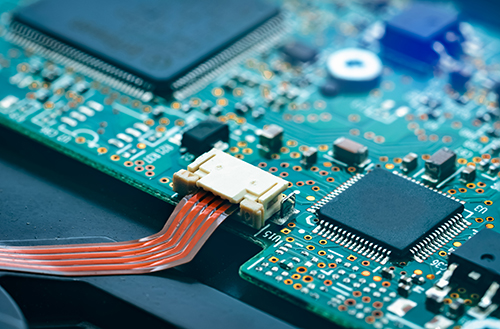EMC Question of the Week: May 25, 2020

A ribbon cable is used to convey a single-ended 1-Mbps 3.3-volt digital signal between two circuit boards. A good estimate for the worst-case emissions around 100 MHz (as measured in an FCC Class B radiated emissions test) from this signal is
- 3,000 μV/m
- 3 V/m
- 300 V/m
- it depends
Answer
The best answer is "a". To obtain this, start by calculating the worst case signal amplitude. The first harmonic of a 3.3-volt square wave has an rms amplitude of about 1.5 volts. The harmonic at 100 (or 101) MHz would be about 1/100th of this or about 15 mV. The transition from single-ended (unbalanced) to ribbon cable (balanced) will cause half of this voltage (7.5 mV) to drive the ribbon cable relative to the board. In a worst-case resonant configuration, about 0.4 mV of common-mode voltage results in radiated emissions at the FCC Class B limit (150 μV/m at 3 meters). Since we have about 20 times the common-mode voltage necessary to reach the limit, our worse case radiated emissions are 20 times (26 dB) higher than the limit (i.e. 3,000 μV/m or 70 dB(μV/m).
These calculations assume that nothing was done to control the transition time of the signal. Slowing the transition time to 80 nsec would reduce the amplitude of the harmonic at 100 MHz by 28 dB. This would ensure that the signal could not cause a radiated emission failure at frequencies near 100 MHz.
Note that "it depends" is often cited as the answer to all EMC and signal integrity questions. One could argue that it is the correct answer here, since more information about the signal and the geometry would allow us to do a more precise calculation. Nevertheless, although one can argue that "it depends" is a correct answer, it is not a very helpful answer (and therefore not the "best" answer). Calculations such as the one above form the basis of a "design for compliance" approach.
And one further note: Even without doing any calculations, experienced EMC engineers would generally recognize that a 3.3-volt digital signal from a typical circuit board driver can't generate a 3 V/m field (much less a 300 V/m field) at a 3-meter distance. In case you're wondering, the driver would have to supply about 120 amps of current at the 100-MHz harmonic in order to achieve this.
Have a comment or question regarding this solution? We'd like to hear from you. Email us at
